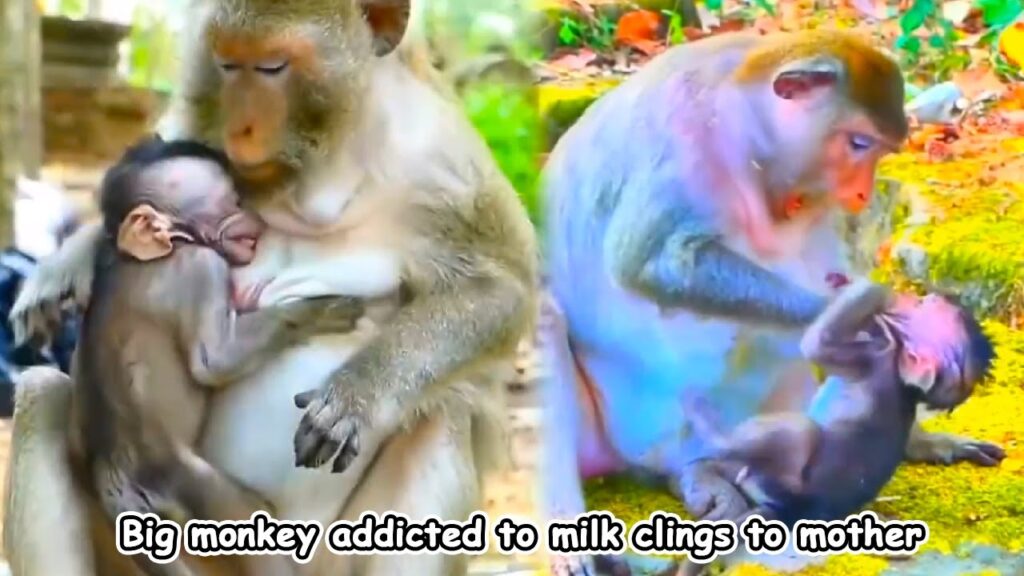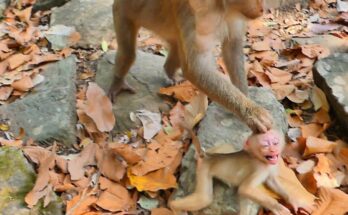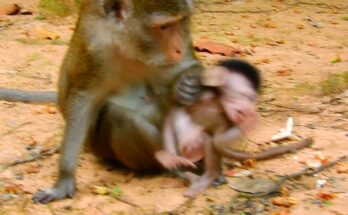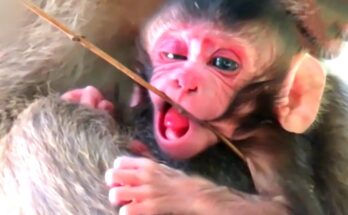
The plaster monkey, stiff and lifeless in its movements, clung tightly to its living mother. This strange little creature had once been a vibrant baby, full of energy and warmth. But after a tragic accident that broke both spirit and body, its tiny limbs were covered in plaster, making every movement difficult. Now wrapped in white casts, the poor baby looked more like a fragile statue than a monkey. Despite that, its instincts still clung to one truth: stay close to mom.
The mother monkey, confused and unsettled, tried to move away. She pulled gently, then harder, sensing something unnatural. The warmth was gone. The softness replaced with a cold hardness. Her baby no longer squeaked, no longer clutched her fur with gentle fingers. Every time she tried to escape the clutches of this plastered figure, it only gripped tighter in silence. She looked down at it, her eyes full of fear and sadness.
Onlookers watched with broken hearts as the mother wrestled between confusion and love. Was it still her baby? Should she run away, or hold on tighter?
The little plaster monkey made no sound, but its wrapped arms and taped tail said everything. It needed her—desperately. But the mother monkey’s instincts were torn. In a world ruled by survival, she didn’t understand casts or healing. She only knew this version of her baby was strange and stiff, not like before.
And so, she hesitated. She pulled. She cried.
It was a scene of raw emotion—love struggling against nature, instinct fighting compassion. Somewhere in her heart, the mother still recognized her baby. But in that moment, it wasn’t easy. And the plaster monkey kept holding on, silently begging not to be left behind.


